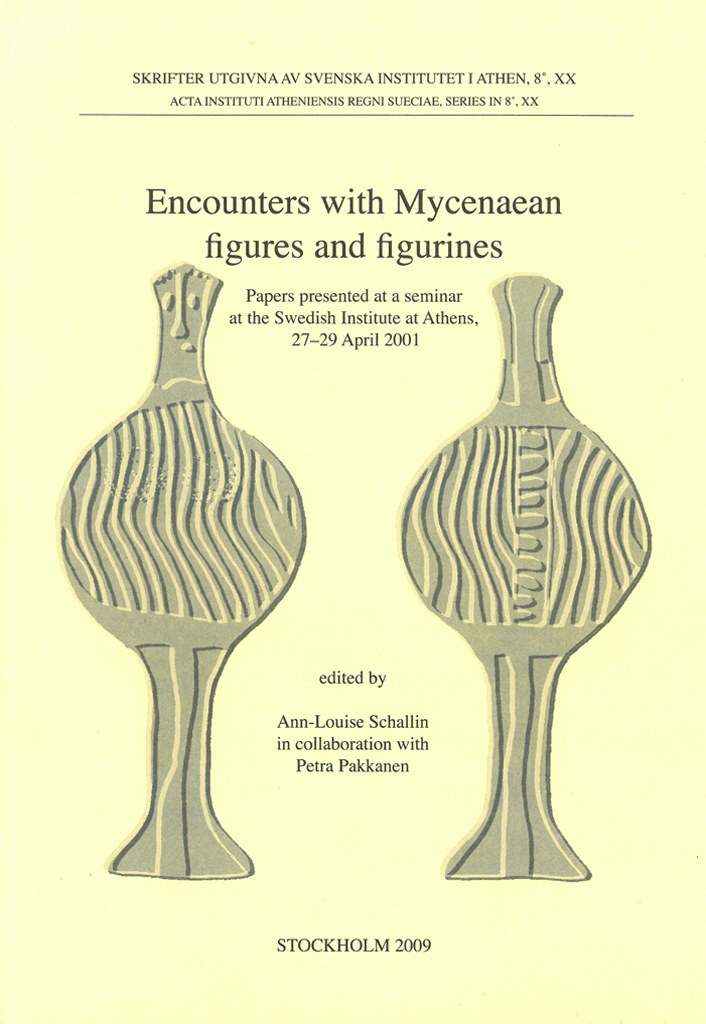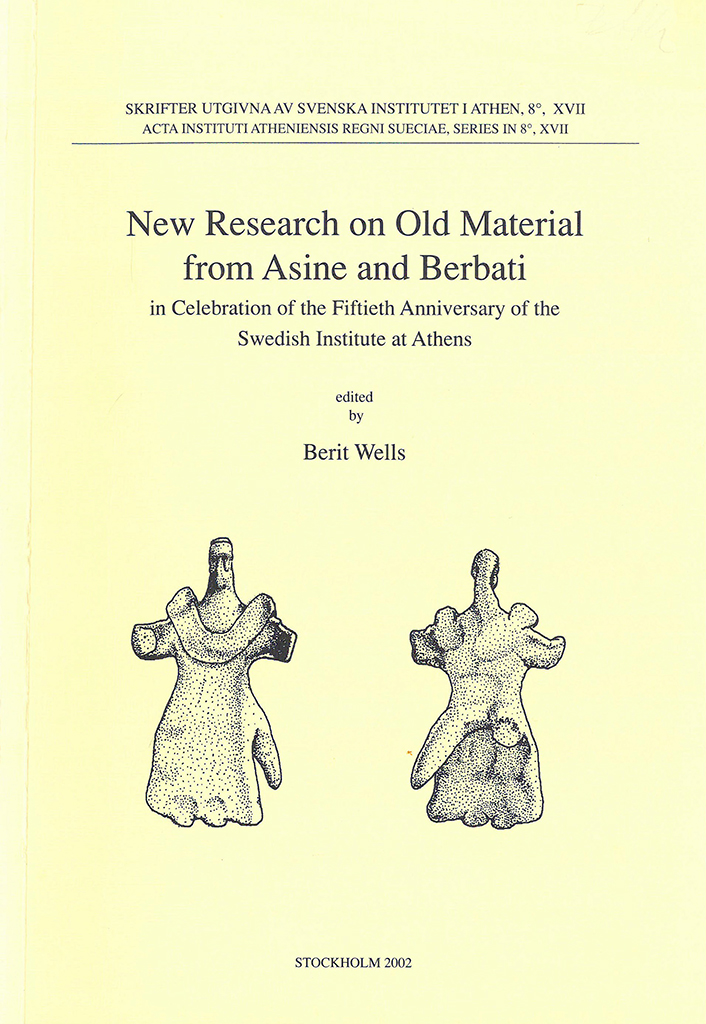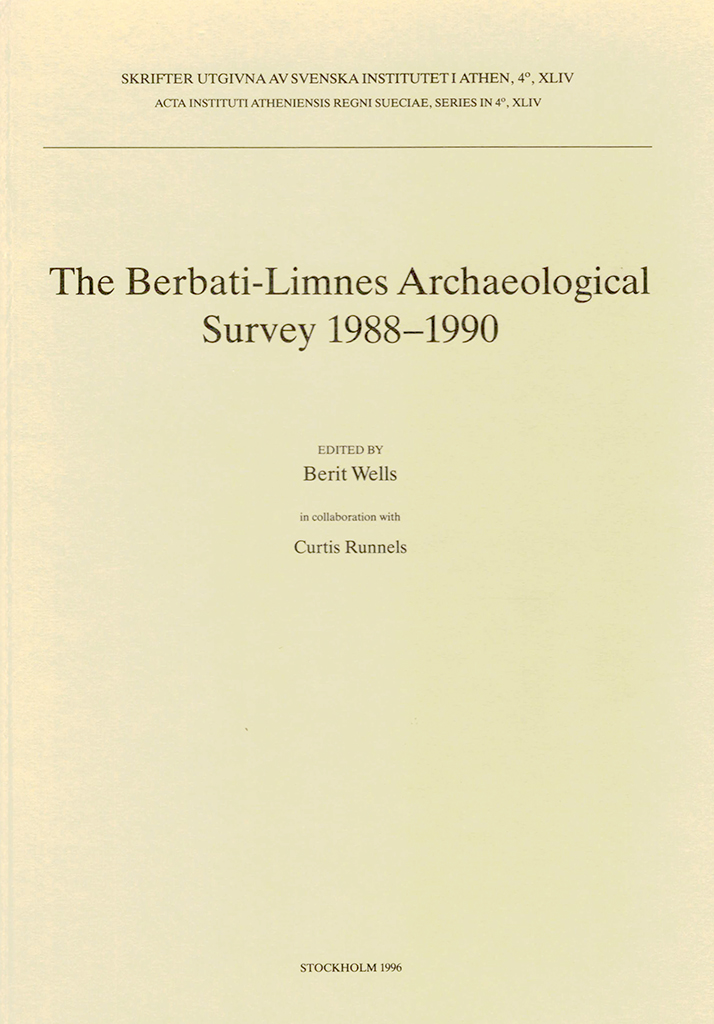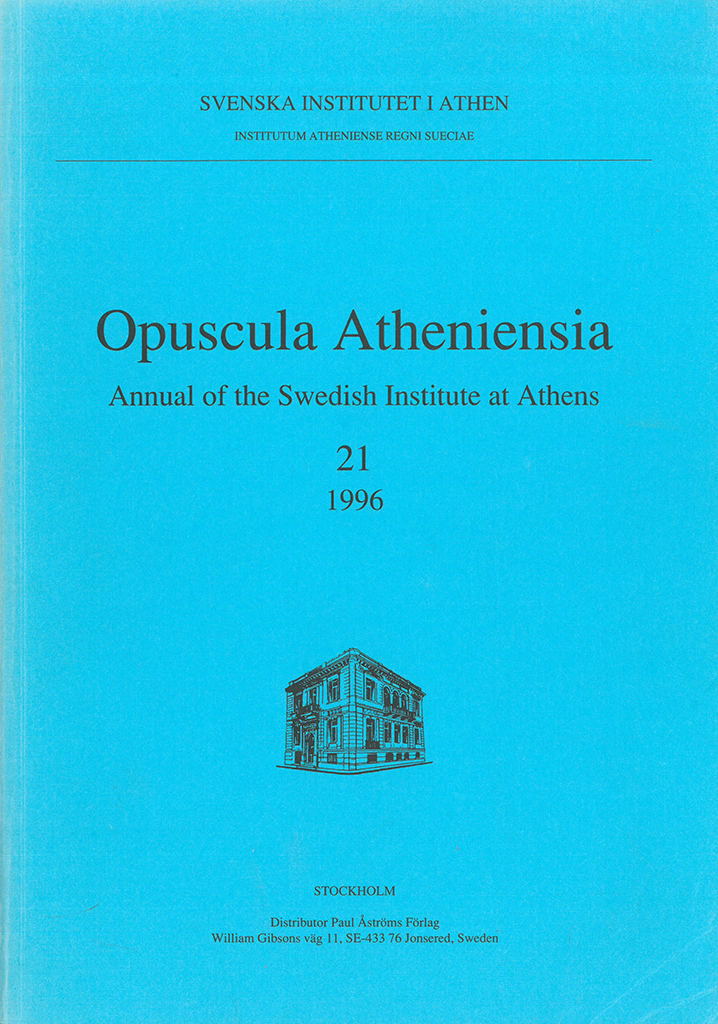Opuscula is published by the Swedish Institutes at Athens and Rome, with the aid of a grant from the Swedish Research Council. Distributed by Eddy.se AB. View journal at ERIH PLUS. All content available with open access. Clay paste characterization and provenance determination of Middle and Late Helladic vessels from Midea By Katie Demakopoulou, Nicoletta Divari-Valakou, Joseph Maran, Hans Mommsen, Susanne Prillwitz & Gisela Walberg Abstract Results of the Neutron Activation Analysis (NAA) of 61 pottery samples of Middle and Late Helladic date from recent excavations in Midea are presented. Chronologically, the sampled pieces fall into two groups, the first of Middle Helladic and Late Helladic I/II, the second of LH III date, with most samples dating to LH IIIB or IIIC. The analyses suggest an Argive/North-eastern Peloponnesian provenance for the majority of the sampled pottery, since 26 of the samples are assigned to the NAA group Mycenae-Berbati (MYBE) and 15 to the NAA group Tiryns (TIR), including their subgroups. In addition to the two main groups the analyses include three other categories: “non-Argive”, unlocated, and singles. The differentiation into a small number of distinct chemical patterns is much more evident in the second chronological group of sampled pottery than…
Published by the Swedish Institute at Athens. Distributed by Eddy.se AB. Mycenaeans up to date. The archaeology of the northeastern Peloponnese—current concepts and new directions Edited by Ann-Louise Schallin & Iphiyenia Tournavitou Abstract This volume contains the proceedings of the conference Mycenaeans up to date: The archaeology of the north-eastern Peloponnese—current concepts and new directions, which was held 10–16 November 2010, under the auspices of the Swedish Institute at Athens. The published papers reveal the latest news in the field of Mycenaean archaeology in the Argolid and the surrounding areas. Ongoing fieldwork, as well as new interpretations of the extant archaeological material is presented and discussed in detail. The first part of the volume consists of papers dealing with new, unpublished evidence regarding many of the well-known Argive sites, including Mycenae, Tiryns, Argos, Midea, and the Nemea Valley, among others. The second part is devoted to in-depth studies on a number of major themes, such as Mycenaean architecture, administration, mortuary practices and religion. Contents Ann-Louise Schallin & Iphiyenia Tournavitou, ‘Introduction’ The Argolid Mycenae Elizabeth French, ‘Tending the past, ensuring the future’ Kim Shelton, ‘Pottery and Petsas House: Recent research on LH IIIA2 Mycenae’ Iphiyenia Tournavitou, ‘The East House in the…
Published by the Swedish Institute at Athens. Distributed by Eddy.se AB. All content is available with open access, use links below. Mastos in the Berbati Valley. An intensive archaeological survey Edited by Michael Lindblom & Berit Wells Abstract This study presents the results of a small but intensive surface survey conducted on the Mastos Hill in the Berbati Valley in 1999. While remains from the Early and Late Helladic period were known from previous excavations on its southern and eastern slopes, this is the first analysis of the entire hill. It includes a digital documentation of the local topography as well as an account of the archaeological remains retrieved in the field. The study fills a gap in different data sets and results gained through old excavations and the extensive 1988–1990 Berbati-Limnes survey. The introductory chapter summarizes previous work in the valley, discusses its ancient routes of communication and outlines the method employed in the archaeological survey. This is followed by an account of the topographical survey and the geographical information system used. In the six following chapters the archaeological remains are presented and analyzed in a diachronic fashion. It is concluded that the hill was predominantely settled in prehistory…
Published by the Swedish Institute at Athens. Distributed by Eddy.se AB. Encounters with Mycenaean figures and figurines. Papers presented at a seminar at the Swedish Institute at Athens, 27–29 April 2001 Edited by Ann-Louise Schallin & Petra Pakkanen Abstract This volume presents fourteen articles which discuss Mycenaean figurines from various points of view. They focus on different aspects of the figurines, elaborating on their function, contextual characteristics, production, use-life, classification, topography, and history of scholarship. The articles are based on papers given at a workshop at the Swedish Institute at Athens in April 2001 entitled ‘Cultic Space and Mycenaean Figurines’. The idea of having a workshop arose from the fact that several of the participants were involved at the time with the documentation of various figurine types from the so-called Potter’s Workshop at Mastos in the Berbati Valley in the Argolid. The number and variety of the Mycenaean figurines from Mastos is impressive, particularly as the excavation had covered only a small area. The excavator, Å. Åkerström, proposed that the site had a cultic function in addition to its role as a production centre. In order to better understand the characteristics and identity of Mastos, scholars were invited to discuss…
Published by the Swedish Institute at Athens. Distributed by Astrom Editions. New research on old material from Asine and Berbati in celebration of the fiftieth anniversary of the Swedish Institute at Athens Edited by Berit Wells Abstract After an introductory paper on the creation of a Swedish Archaeological School at Athens, ten papers deal with subjects associated with material excavated at Asine and Berbati in the Argolid before the new wave of excavations in the 1970’s. The following subject matters are discussed in relation to Asine: the emergence of an élite in the Middle Helladic (MH) period; pre-firing marks on MH Aeginetan pottery; wooden boxes used as coffins for infants in MH times; MH child morbidity and child mortality; Asine as a case of economic interaction in the Argolid; the provenience and alloy compositions of metal objects diachronically; the source of iron during the Geometric period; bridging the gap in settlement between 700 and 300 BC. Two papers are concerned with Berbati: one underlines the continuity of the Mastos settlement from Early Helladic II into EH III; and one lays out the possibilities for a detailed study of the provenience of the local Mycenaean ceramics. Contents Preface (p. 7) Berit…
Published by the Swedish Institute at Athens. Distributed by Astrom Editions. The Berbati-Limnes Archaeological Survey 1988–1990 Edited by Berit Wells & Curtis Runnels Abstract This volume presents the results of the surface survey carried out in the Berbati Valley and on the Limnes plateau for three seasons between 1988 and 1990. Both in ancient and modern times the two areas differ considerably both economically and politically, which in part is due to the natural environment, Prosímni (Berbati) lying in a fertile valley and Limnes in a mountainous district. The introductory chapter gives a general background to the project, introducing the two villages involved, presenting the objectives and setting out the methods employed in the field. For much of its history the Berbati-Limnes area depended upon external economic systems and powers. Thus the Final Neolithic–Early Helladic pastoral economy can be explained as part of the developments in the Balkans called the Secondary Products Revolution. These changes resulted in the catastrophic soil erosions which more or less depopulated the area at the end of the EH. The recovery was slow. Only towards the end of Middle Helladic does there seem to be a new beginning, which heralds intensive use of the area…
Published by the Swedish Institute at Athens. Distributed by Astrom Editions. Opuscula Atheniensia. Annual of the Swedish Institute at Athens 21, 1996 Contents Edmund F. Bloedow, ‘‘Olympian’ thoughts: Plutarch on Pericles’ Congress Decree’ Katie Demakopoulou, Nicoletta Divari-Valakou, Paul Åström & Gisela Walberg, ‘Excavations in Midea 1994’ Lola Eriksson, ‘The Greek perception of nature—an ideological strategy? Preliminary outline for a working hypothesis’ Jeannette Forsén, ‘Prehistoric Asea revisited’ Jeannette Forsén, Björn Forsén & Mika Lavento, ‘The Asea valley survey: a preliminary report of the 1994 season’ Göran Henriksson & Mary Blomberg, ‘Evidence for Minoan astronomical observations from the peak sanctuaries on Petsophas and Traostalos’ Elizabeth Kosmetatou, ‘Midea in the post-Bronze-Age period. A preliminary report’ Peter Liljenstolpe & Patric von Schmalensee, ‘The Roman stoa of Poleites at Labraynda. A report in its architecture with an appendix by Johan Flemberg’ Arto Penttinen, ‘Excavations on the Acropolis of Asine in 1990’ Charlotte Scheffer, ‘Return or no return. The so-called ephedrismos group and the Hephaisteion’ Berit Wells, Gunnel Ekroth & Kai Holmgren, ‘The Berbati Valley Project: the 1994 season’ Book reviews E. Schorfield, ‘A.-L. Schallin, Islands under influence. The Cyclades in the late Bronze Age and the nature of the Mycenaean presence’ Carole Gillis, ‘T.P. Hutchinson,…
Published by the Swedish Institute at Athens. Distributed by Astrom Editions. Berbati vol 2. The pictorial pottery By Åke Åkerström Bibliographical information Åke Åkerström, Berbati vol. 2. The pictorial pottery (Skrifter utgivna av Svenska institutet i Athen, 4°, 36), Jonsered 1987. ISSN 0586-0539. ISBN 9789185086962. Alternative series title: Acta Instituti Atheniensis Regni Sueciae series in 4˚, XXXVI







